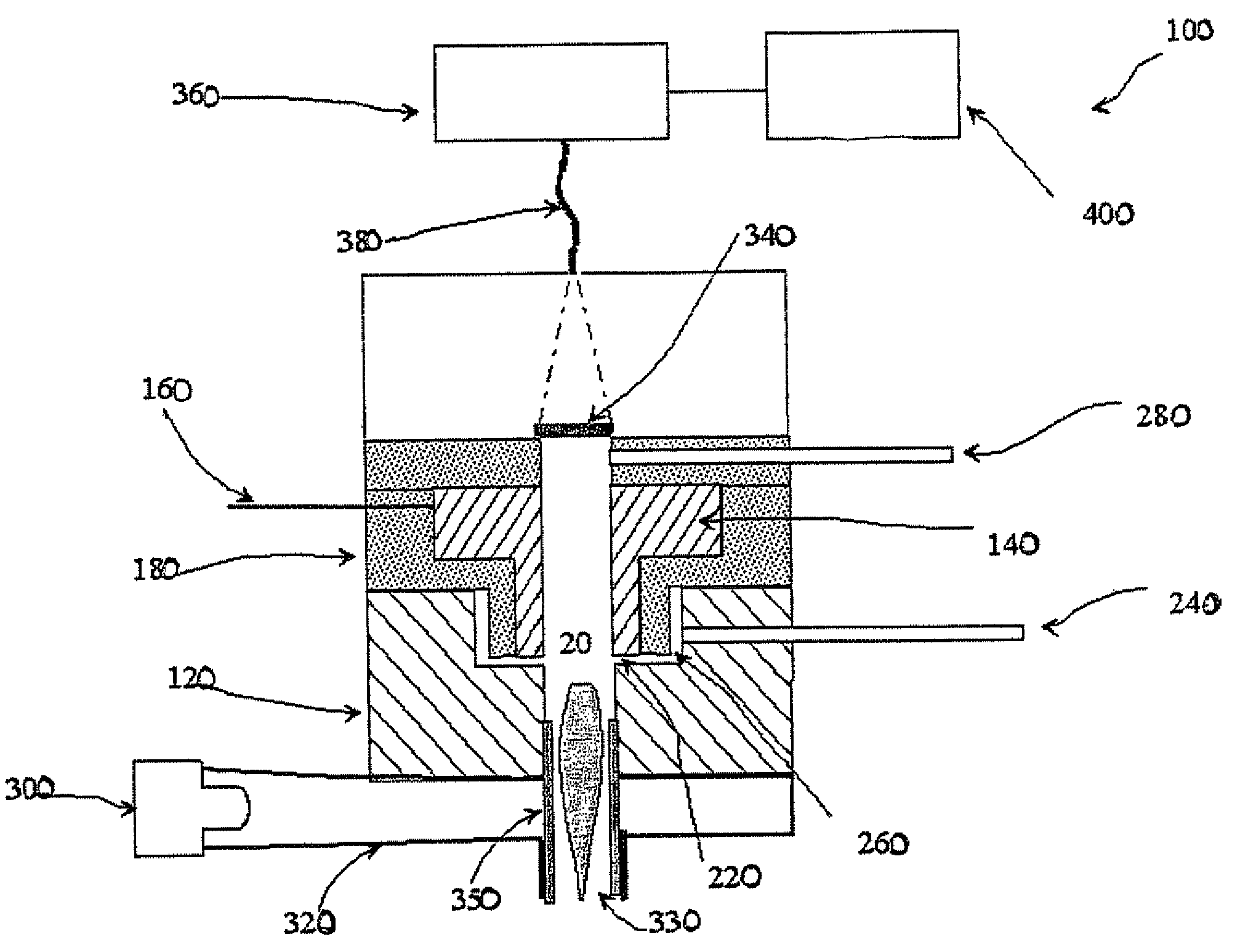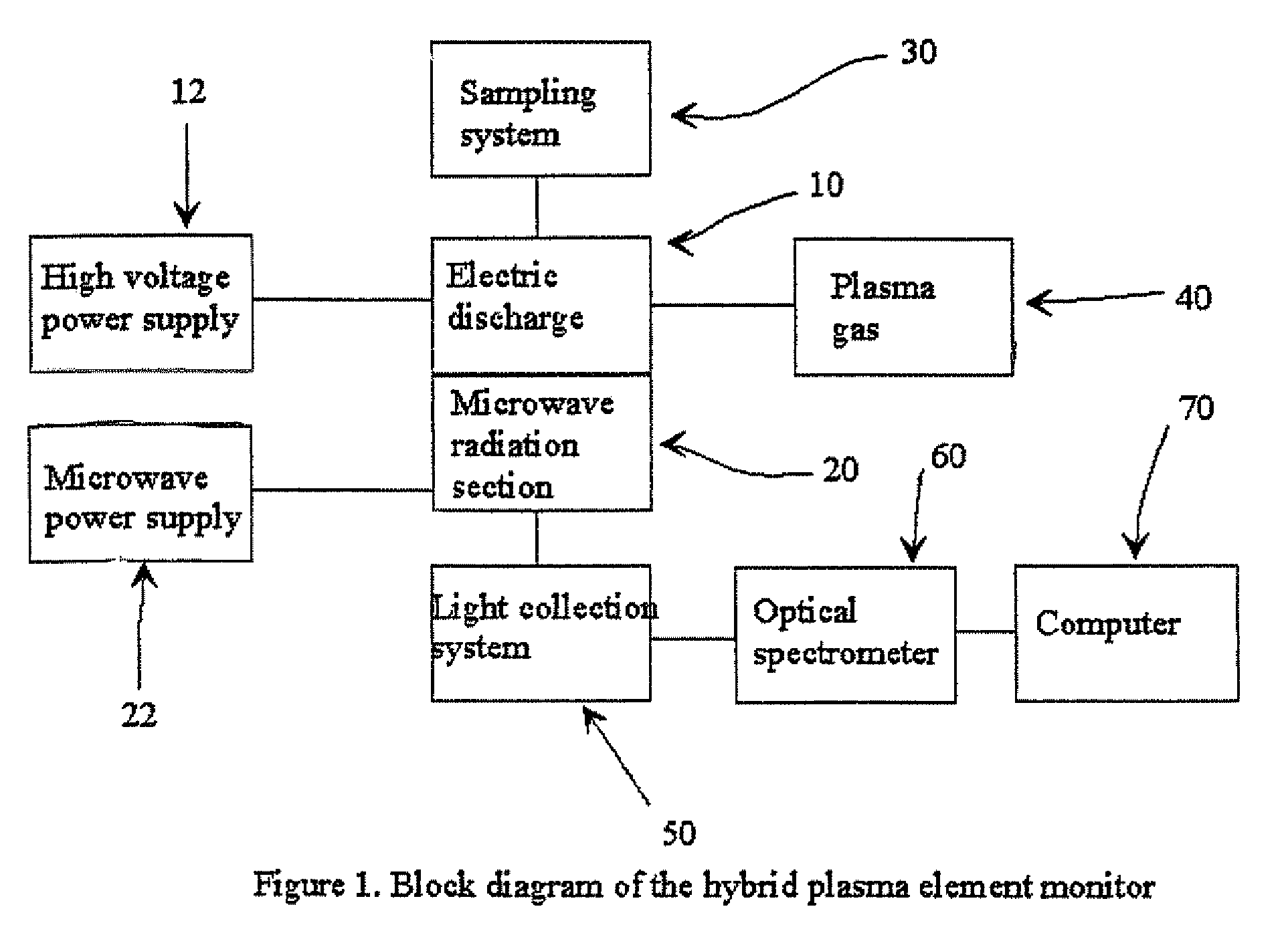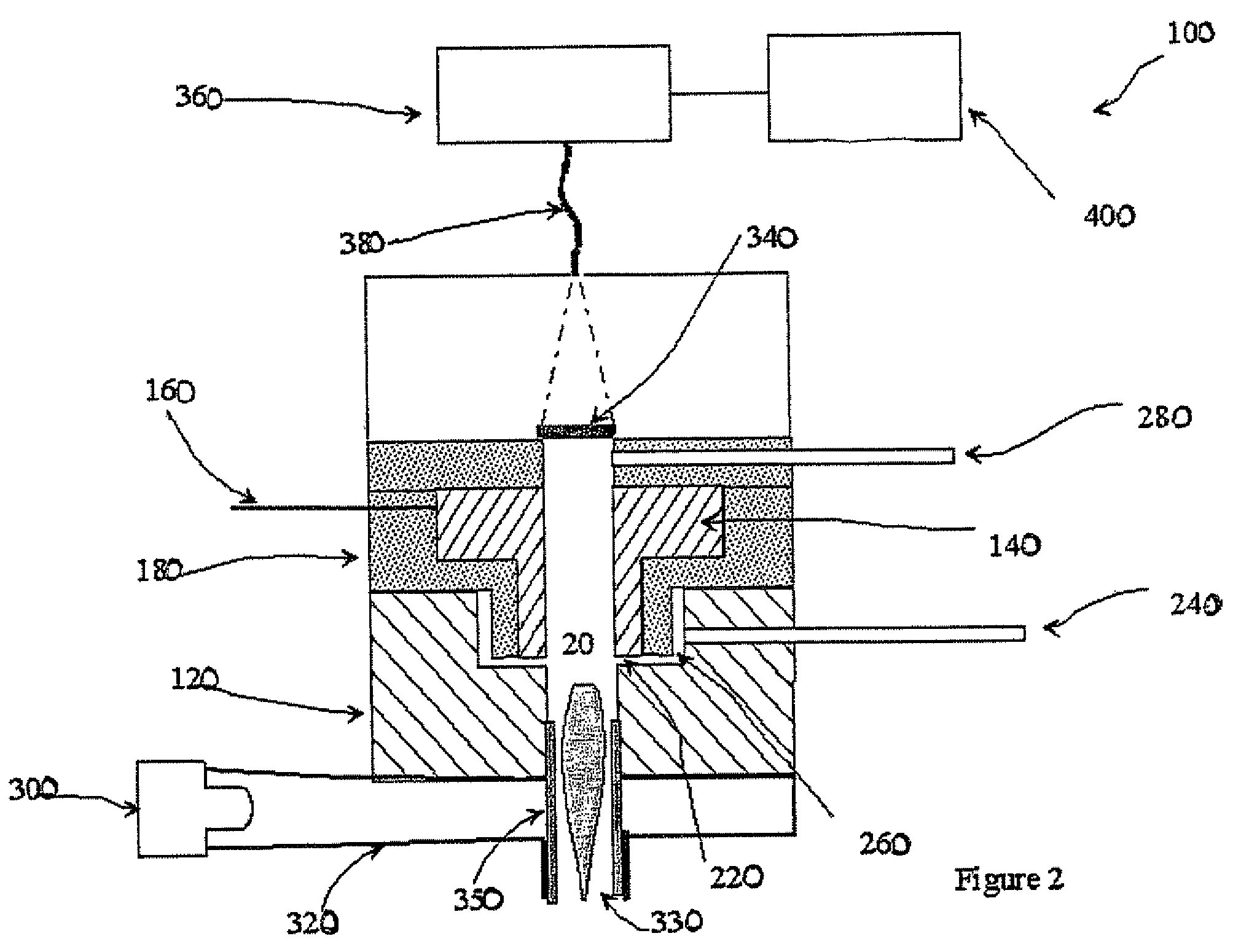Hybrid plasma element monitor
a plasma element and monitor technology, applied in the field of element monitors, can solve the problems of large sample size restriction, complicated sample preparation, and large amount of hazardous waste, and achieve the effects of reducing background noise, increasing sensitivity, and low sample throughpu
- Summary
- Abstract
- Description
- Claims
- Application Information
AI Technical Summary
Benefits of technology
Problems solved by technology
Method used
Image
Examples
Embodiment Construction
[0013]A block diagram of the disclosed invention is given in FIG. 1. The hybrid plasma element monitor includes an electric discharge device 10 that is fed by a high voltage power supply 12, a microwave radiation section 20 that is fed by a microwave power supply 22, a sampling system 30 that feeds a sample into the plasma for analysis, a plasma gas feeder 40 that feeds plasma gas into the discharge device 10. The sample can be fed into the plasma at either ends of the plasma, i.e. through the electric discharge section 10, or through the microwave section 20. The plasma gas can be air, nitrogen, argon, or any other gas. The hybrid plasma element monitor also contains a light collection system 50 that can be a lens, a fiber optics, a mirror, or a combination of the three. The light collection system 50 feeds the light into an optical spectrometer 60 and a computer 70 acquires and analyzes the data.
[0014]In a preferred embodiment of the hybrid plasma elements monitor shown in FIG. 2,...
PUM
| Property | Measurement | Unit |
|---|---|---|
| output voltage | aaaaa | aaaaa |
| output voltage | aaaaa | aaaaa |
| frequency | aaaaa | aaaaa |
Abstract
Description
Claims
Application Information
 Login to View More
Login to View More - R&D
- Intellectual Property
- Life Sciences
- Materials
- Tech Scout
- Unparalleled Data Quality
- Higher Quality Content
- 60% Fewer Hallucinations
Browse by: Latest US Patents, China's latest patents, Technical Efficacy Thesaurus, Application Domain, Technology Topic, Popular Technical Reports.
© 2025 PatSnap. All rights reserved.Legal|Privacy policy|Modern Slavery Act Transparency Statement|Sitemap|About US| Contact US: help@patsnap.com



